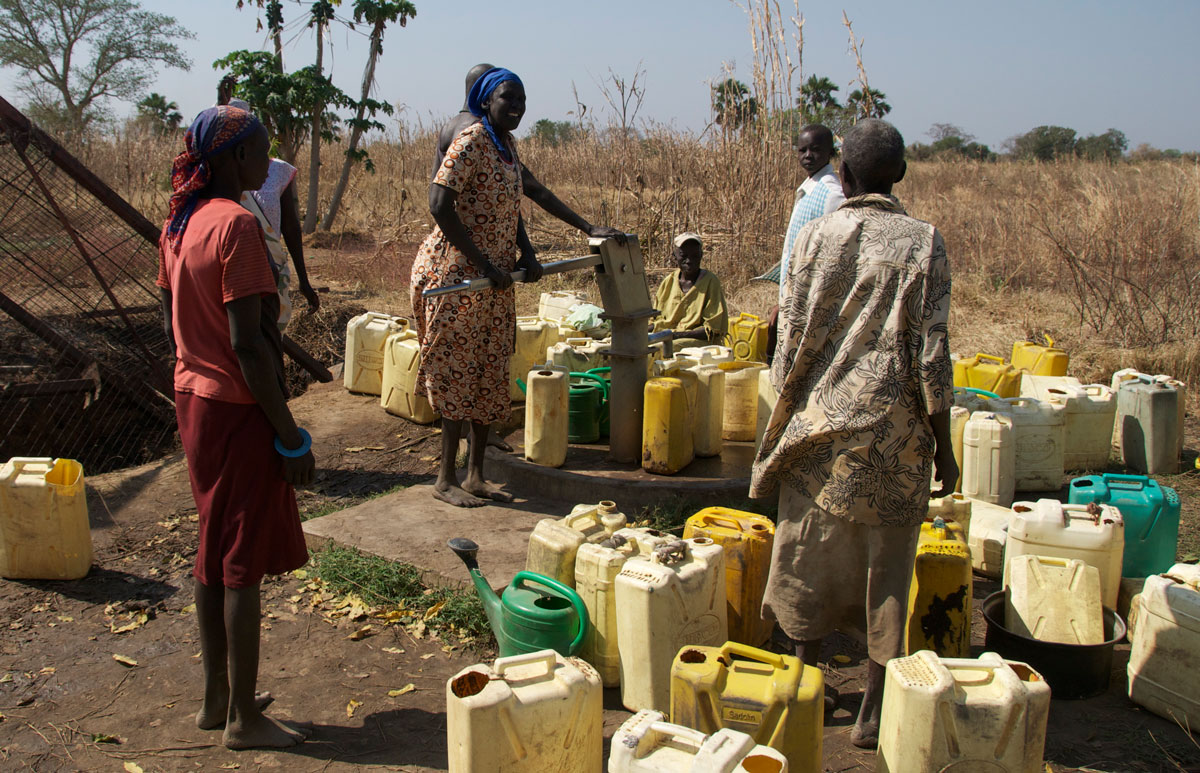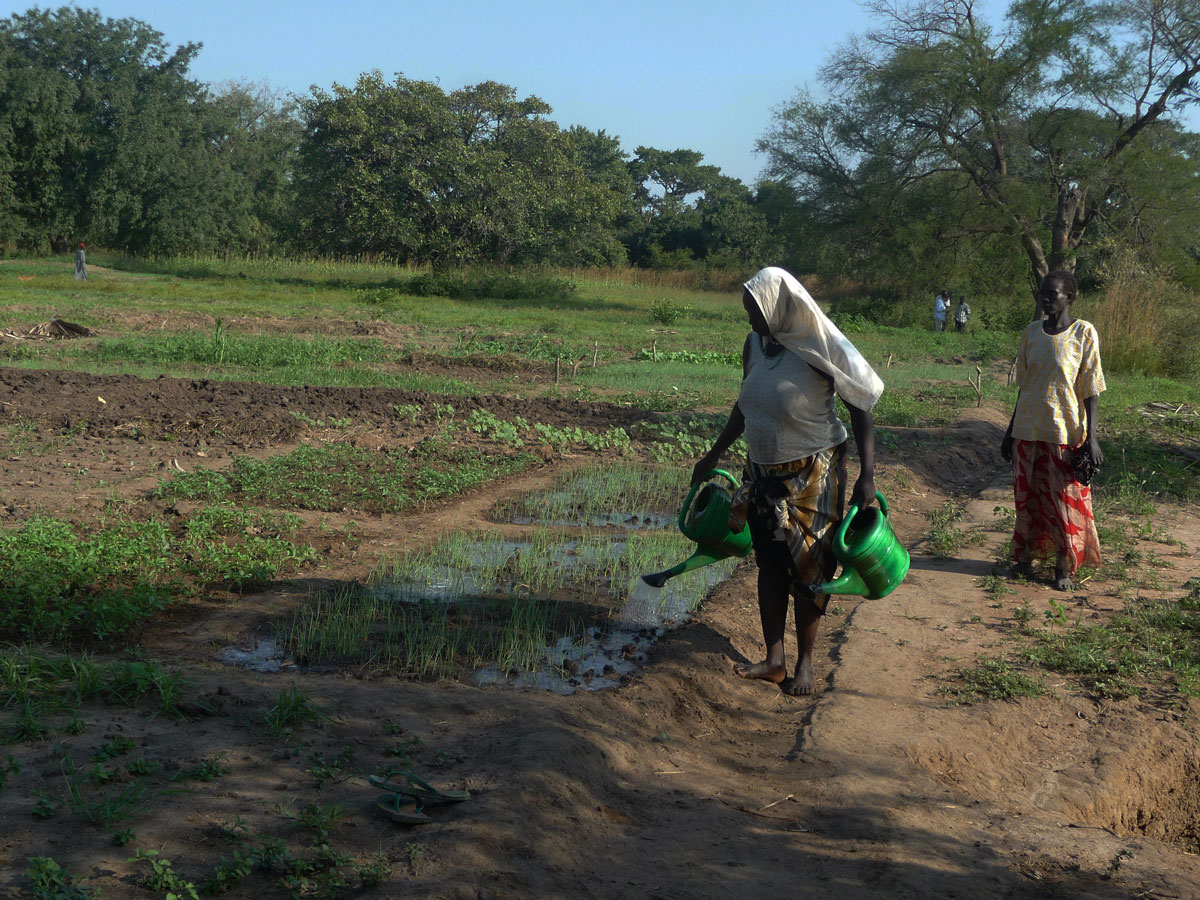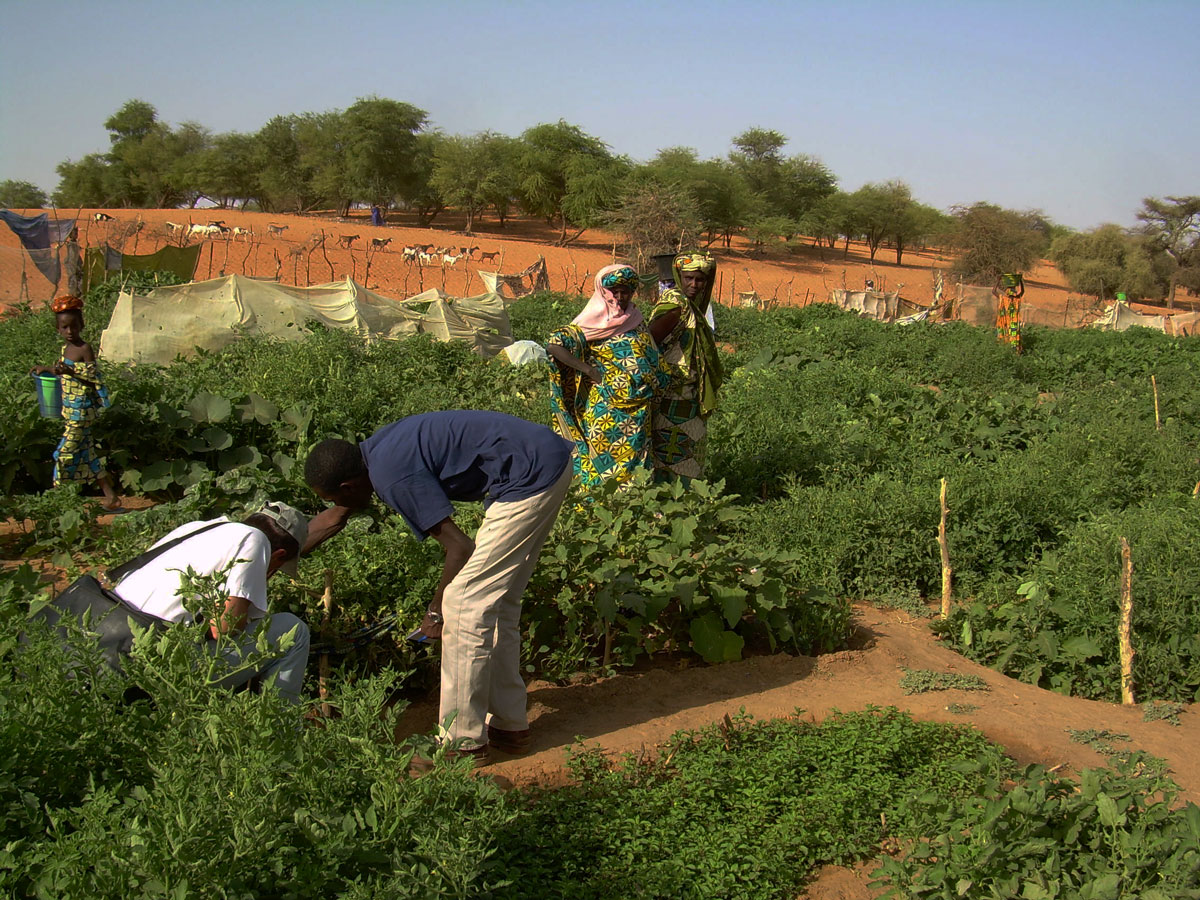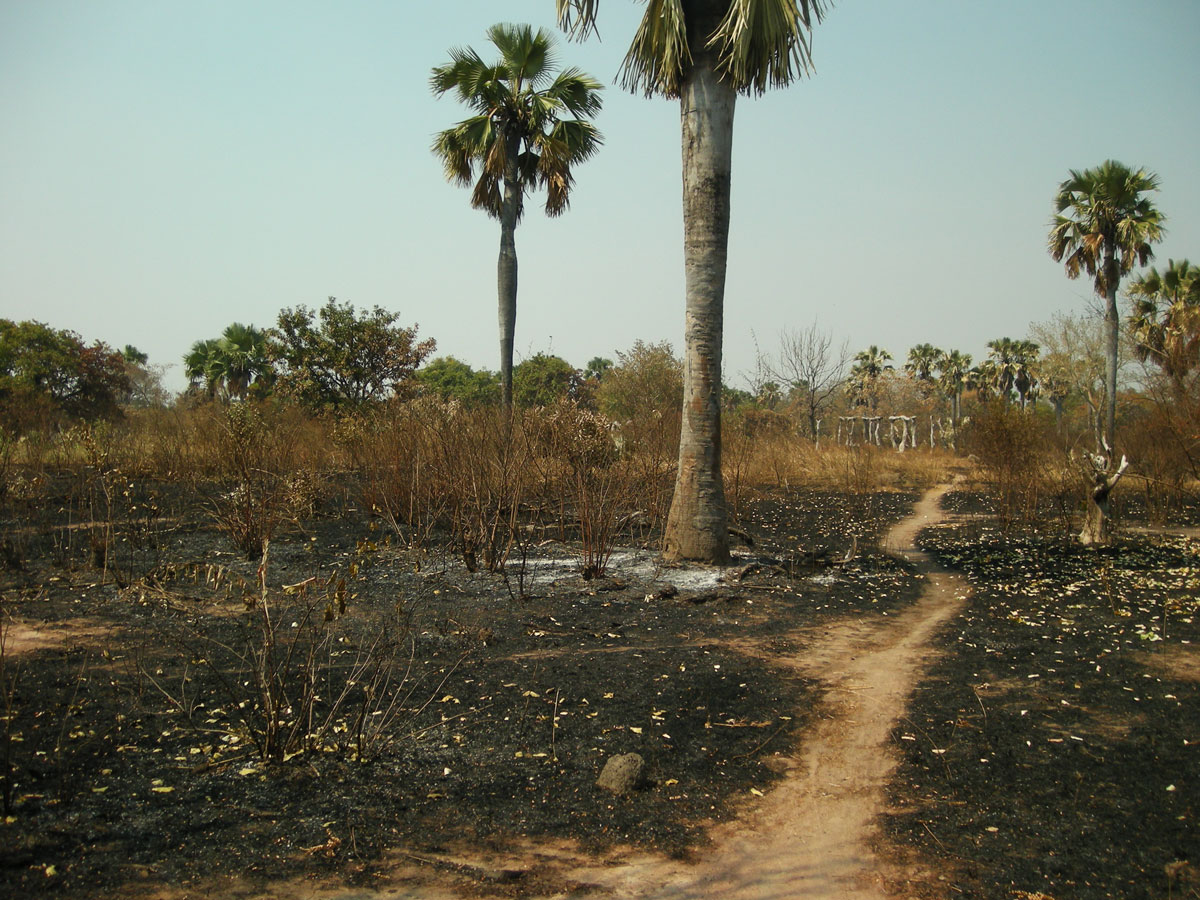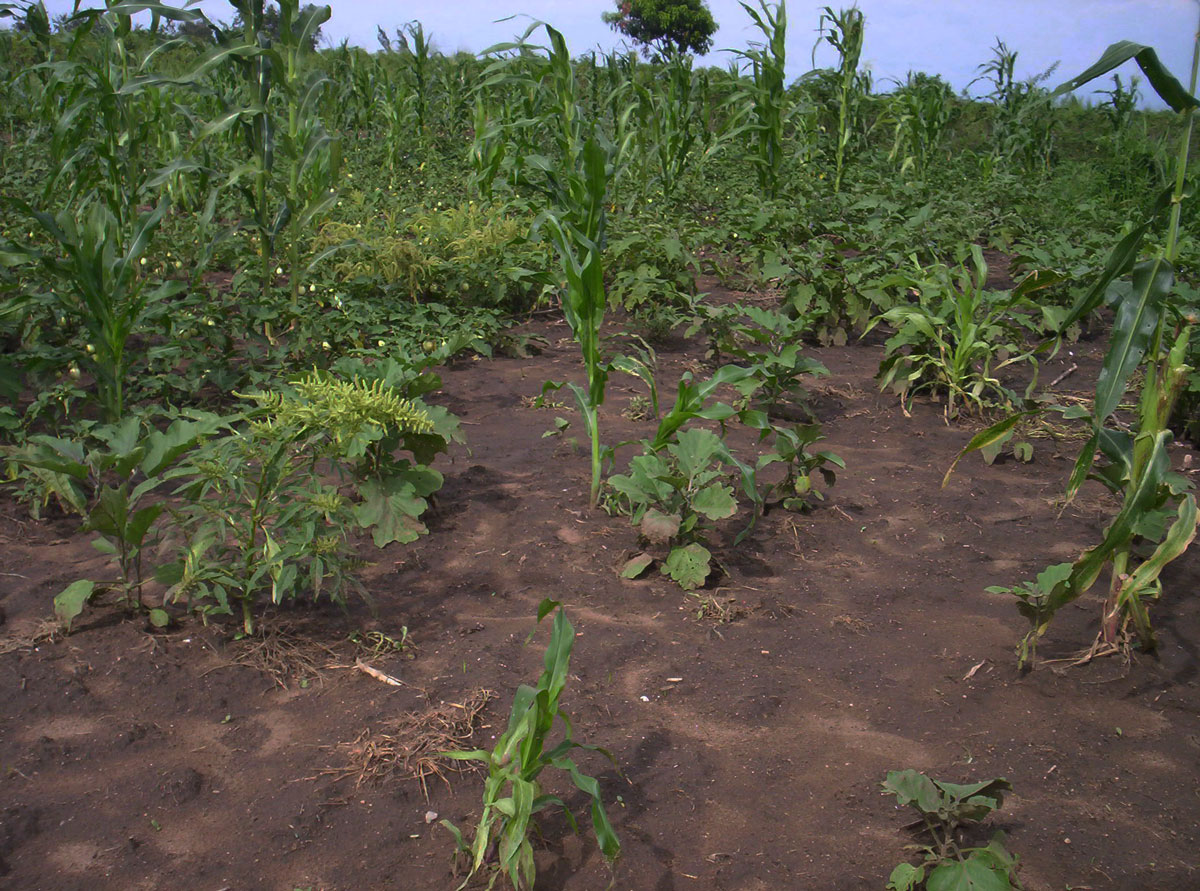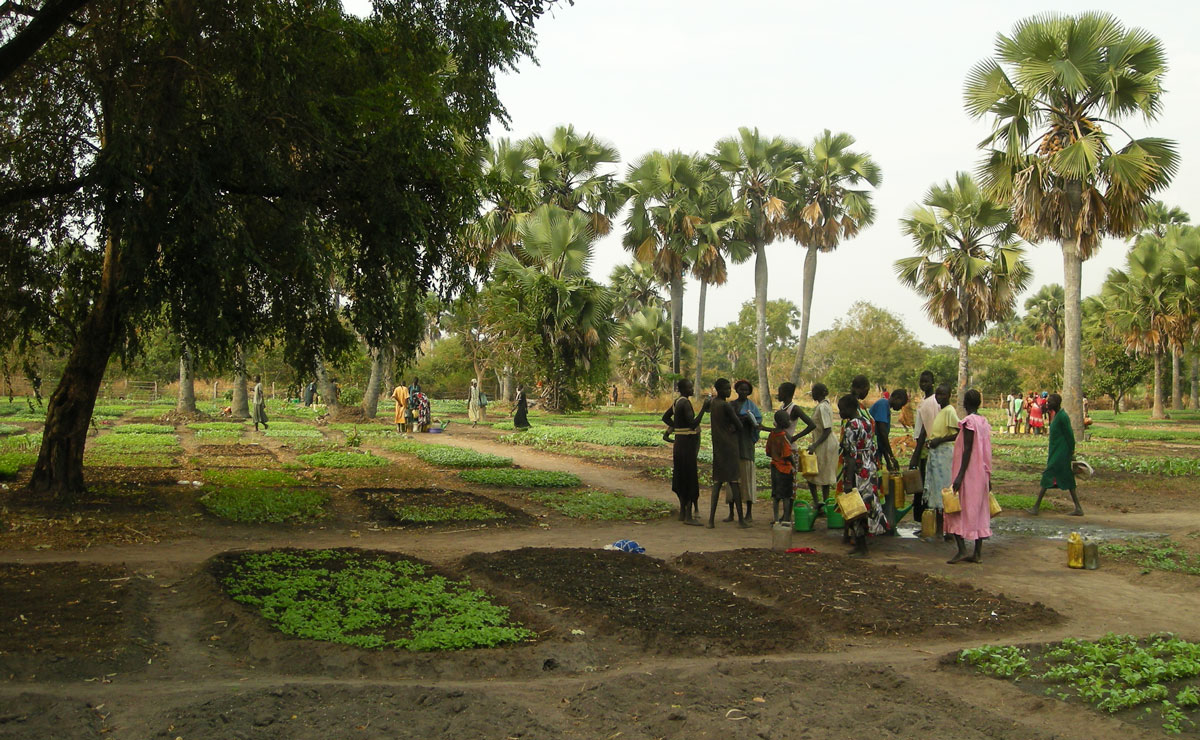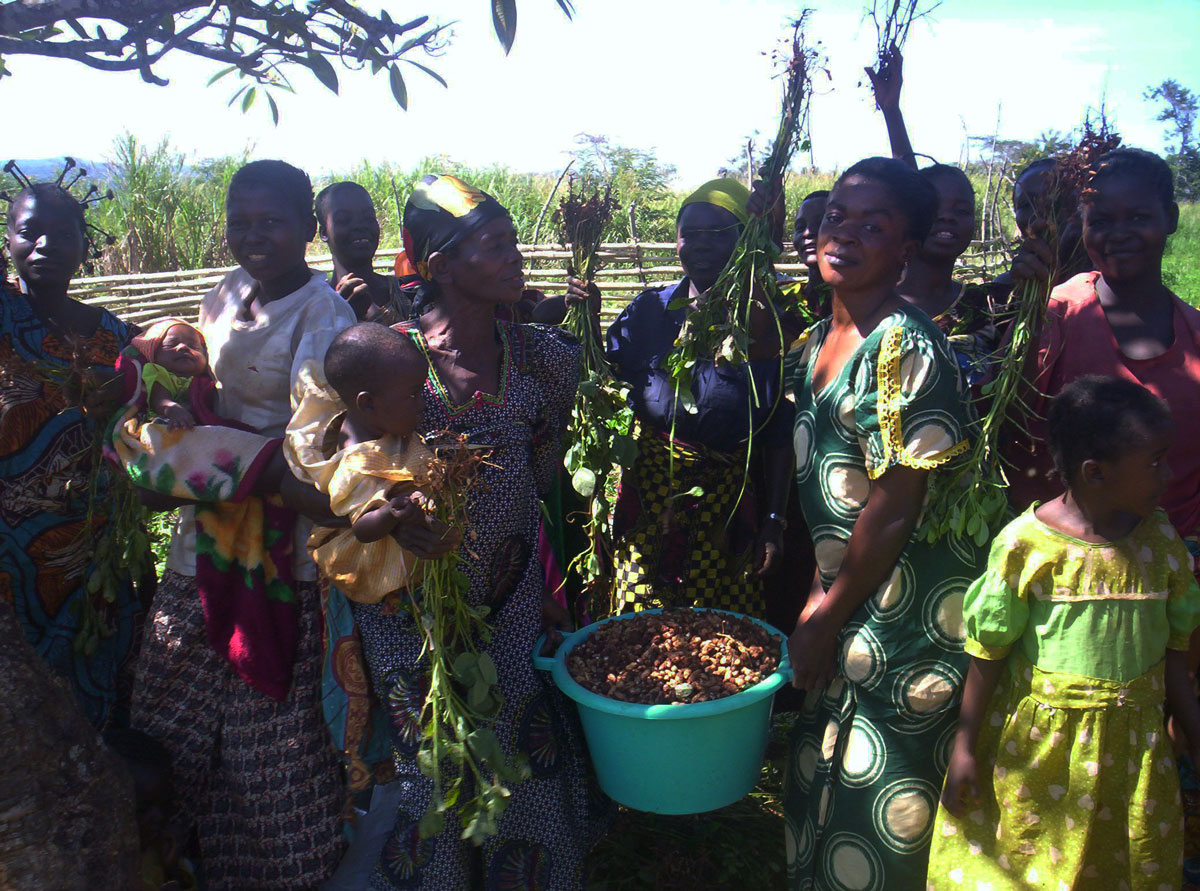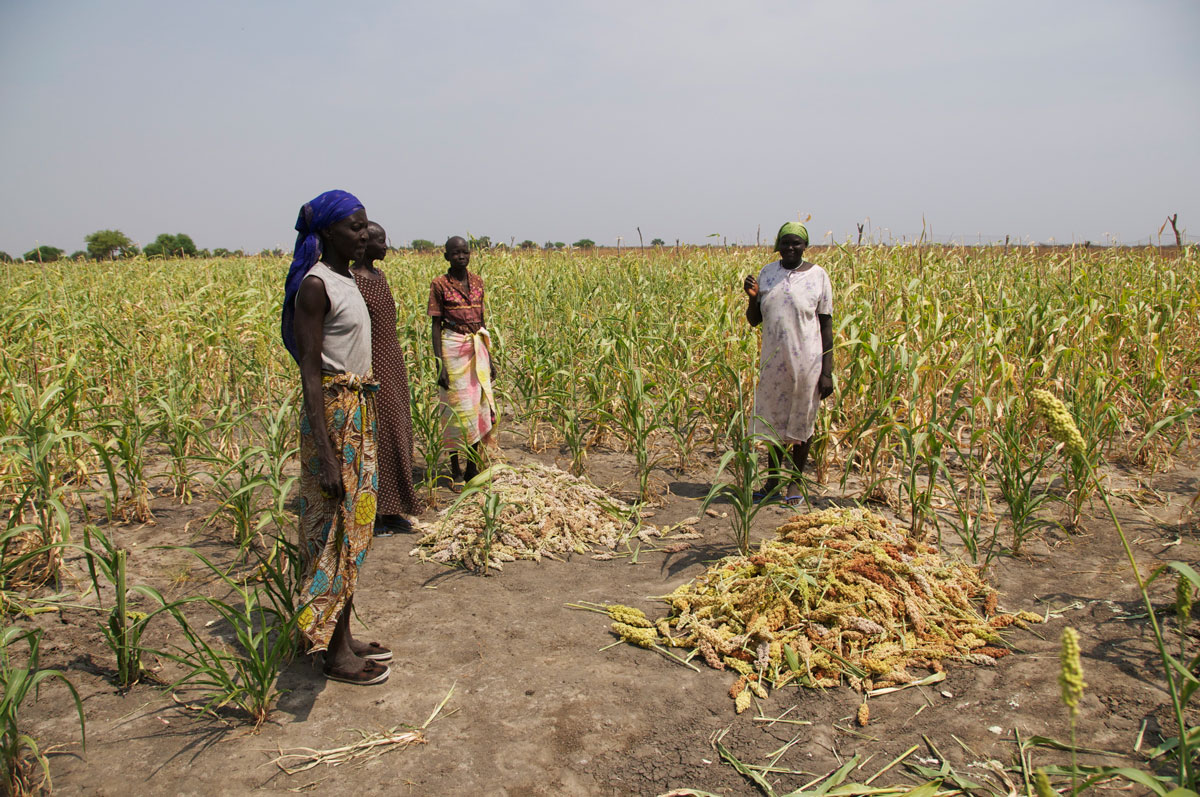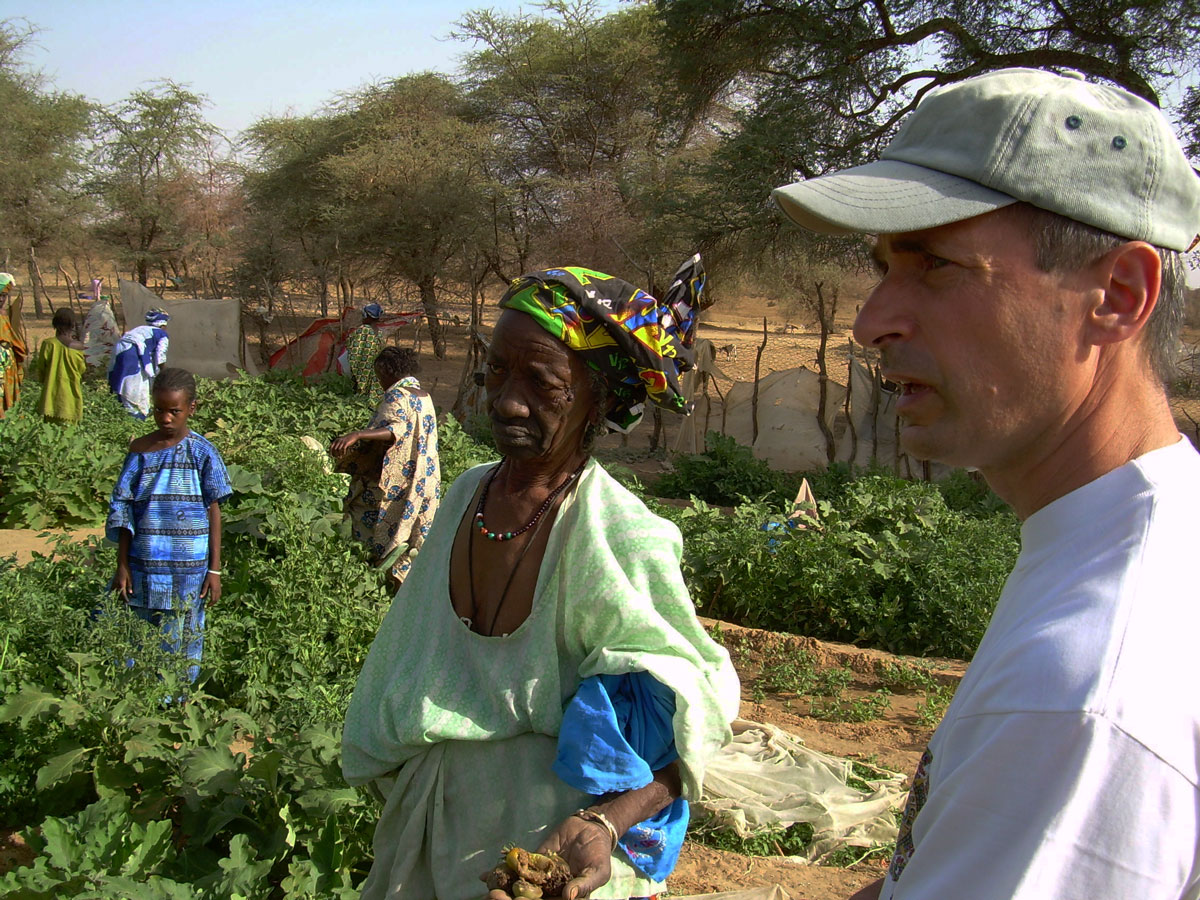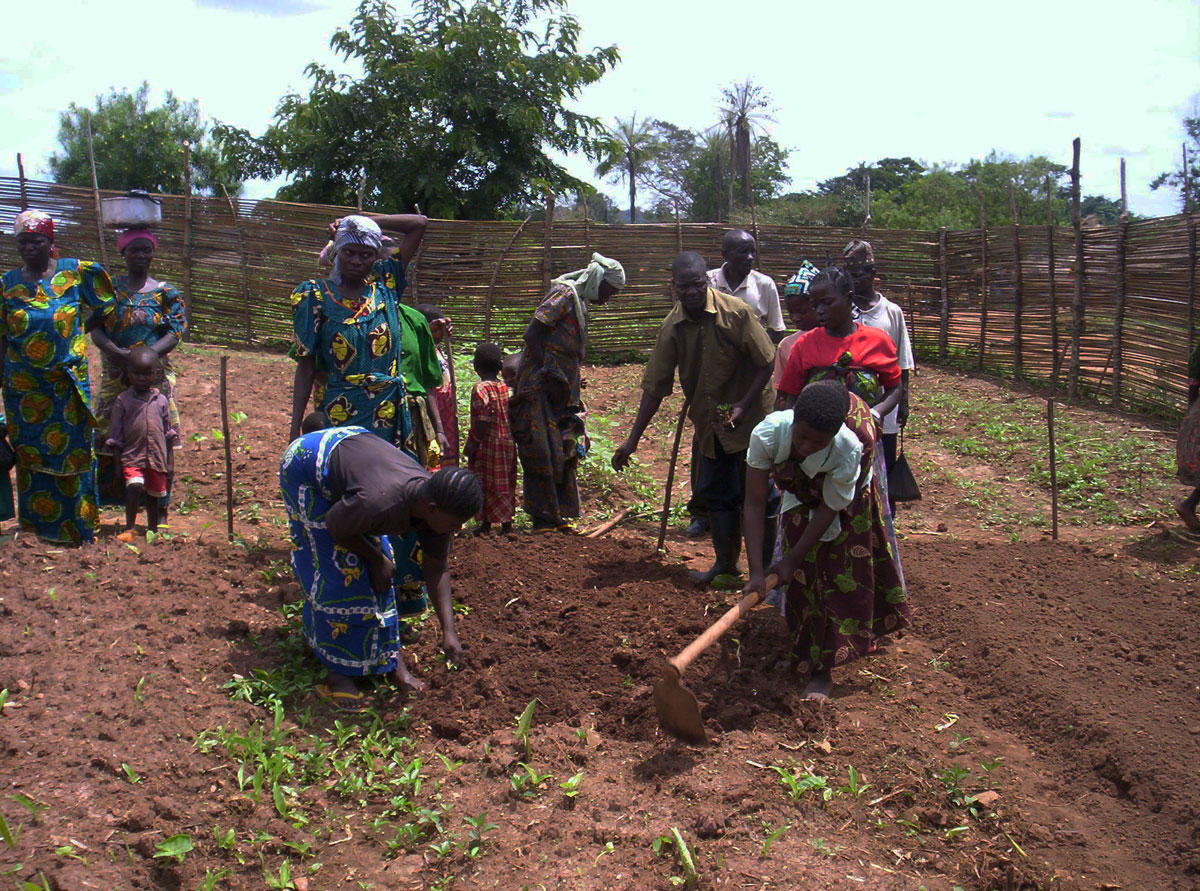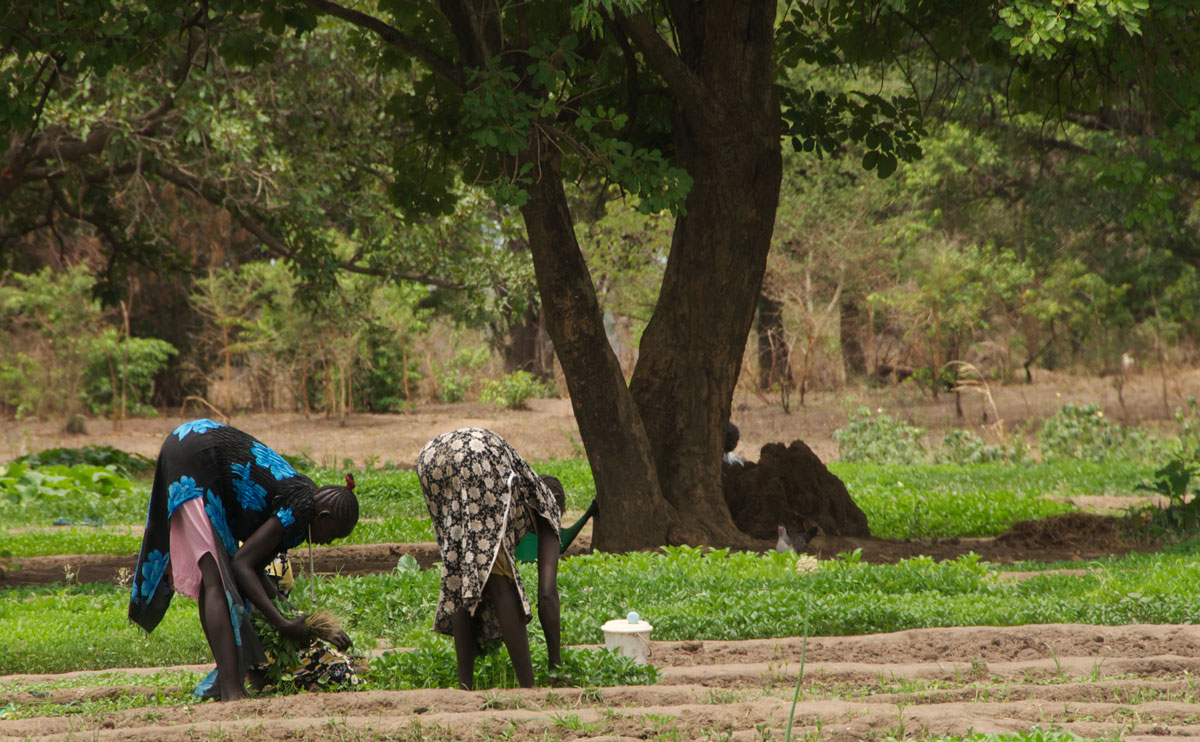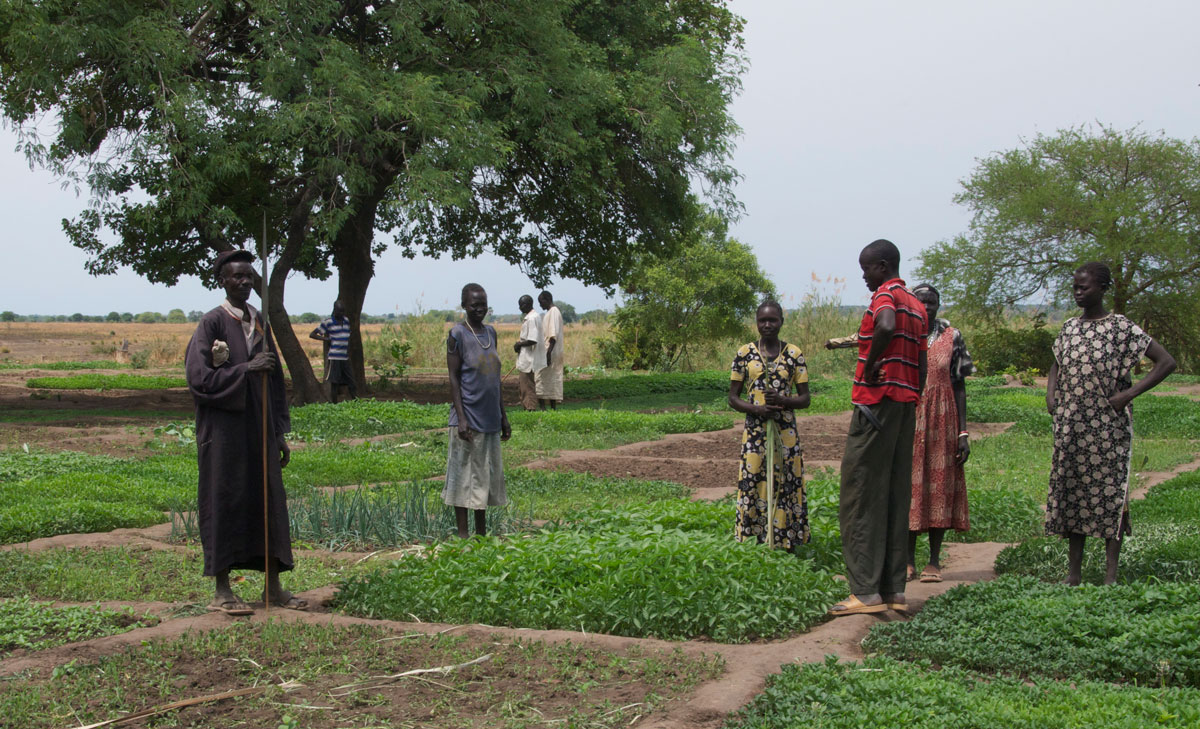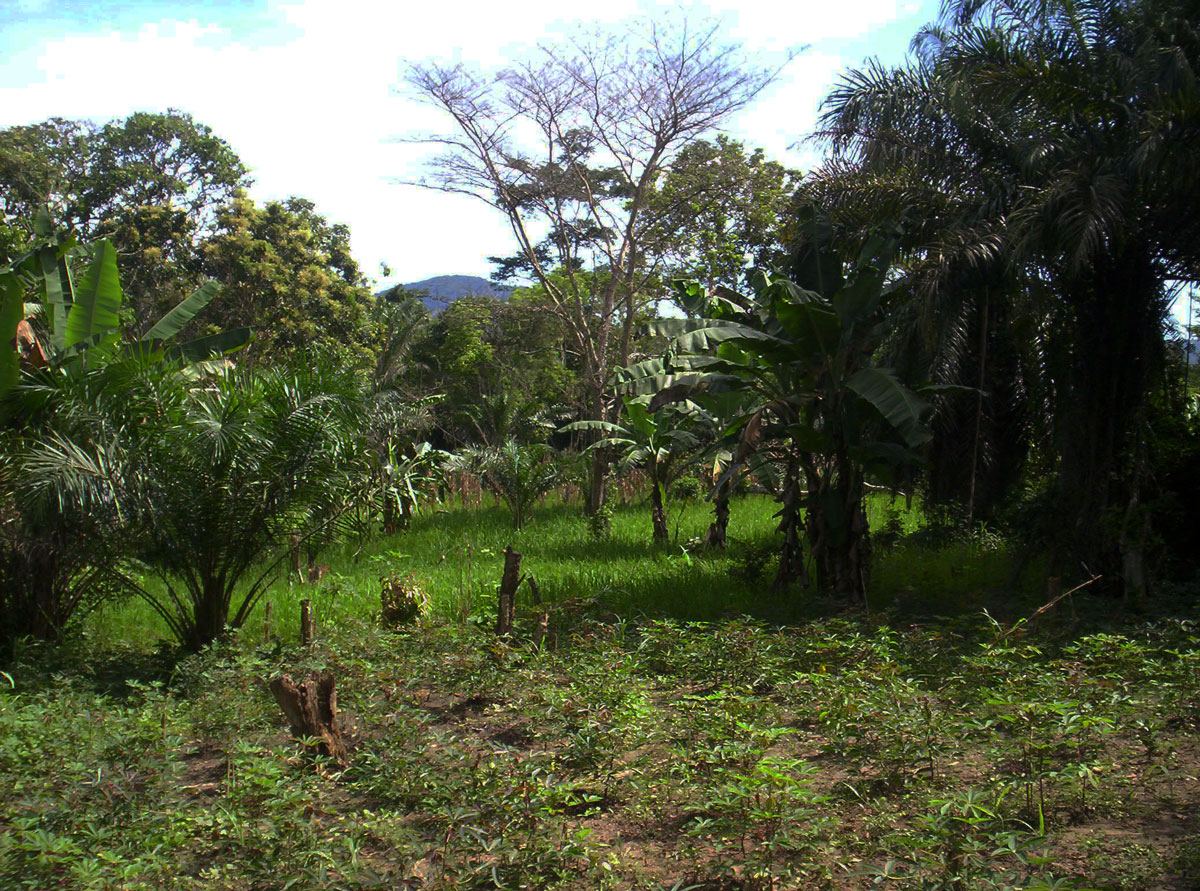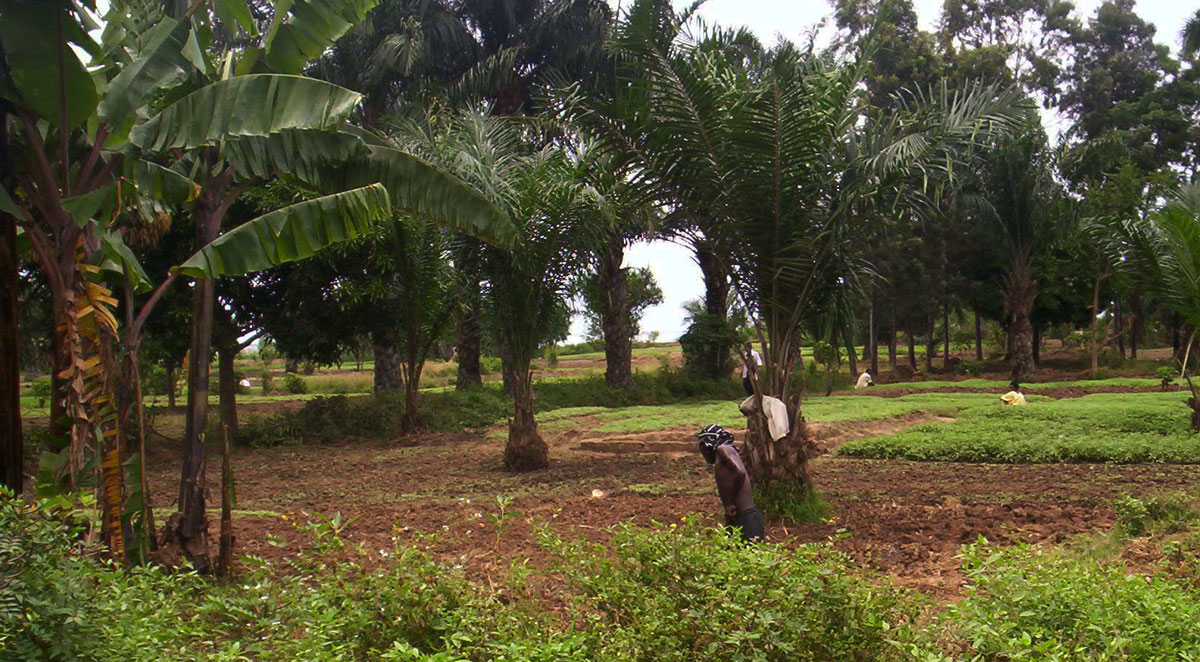From greens to agroforestry : women’s collective vegetable gardens
In the rural area of several Sub Saharan African countries, groups of women from villages, manage collective vegetable gardens.
Depending on the number of women, there are one or two gardens, no more.
The possibility of access to land
In several countries, of these areas, women do not have access individually to land: the management of land is reserved for men.
However, tradition allows the chiefs of the villages to give plots to groups of women, close to a water point, at the edge of the village.
When animals are free grazing (goat, sheep, calf...), the plots given are faraway to avoid too much damage to the crops.
Access to water
These vegetable gardens are located near a river, a swamp area that has water throughout the year or close to a borehole.
The possibility of access to water during the dry season opens new cultivating possibilities; the other fields are cultivated only during the rainy season.
This is of major interest, even though the impact is reduced by the small scale cultivated and the lack of equipment for carrying the water to the plants.
Few groups of women have partners that could provide equipment for accessing water, transporting and distributing it.
The lack of access to water is still a limiting factor in many places.
A fenced plot
Many groups of women build a fence around their collective plot to protect it against animals that are free grazing. Very few have the possibility to use wire mesh or barbed wire. Very often the women cut thorny bushes and fence the plot with it. This could be efficient for a while, but quickly needs renewing once the thorny bushes deteriorate; which is not done or very rarely.
Therefore these fences are not really efficient; and month after month, the damages done by the animals increase.
The quality of the fences limits production.
Access to seeds
Few communities have the know-how in market gardening; the women groups often have difficulties accessing seeds and don’t know how to manage this.
Sometimes, NGOs distribute certain seeds and provide some tools (hoe, water can...). Few seeds are sold in local markets.
Accessing good varieties of seeds, adapted to the local area and with a high germination capacity, becomes more difficult the further you go into in the bush.
Very few groups of women have learnt to produce their own seeds, to keep it in good storage place, to exchange it with other groups in order to limit the genetic erosion.
A lack of access to good seeds limits production.
Agricultural practices can be improved
Many women from the villages are not educated. In some rural areas, 99 % of women are illiterate.
The knowledge of agriculture they have comes from the repetition of traditional ways used locally.
They use fire (to clean a wild plot, before cultivating), they spread the seeds instead of using lines, they make garden beds too large (they are obliged to walk in to clean it), they leave the soil naked and don’t use the mulch to protect it.
The crops are not protected against pests and fertilisation is based on dried manures (which is not composted).
So, in order to drive these groups to a sustainable and productive agriculture, there is a large potential for improvement in the practices used.
This lack of technical knowledge is also a limiting factor to production.
An important social role
Despite all these difficulties, with mutual help and perseverance, the women are producing crops.
Women of different ages are members of the groups. This social diversity strengthens the social network in the villages; the hard work is not done by the elderlies, by the sick nor by pregnant women.
The collective gardens come in different organisational structures:
- Some gardens have individual plots – the production will be for the woman who cultivates it.
- In other ones, all the plots are cultivated collectively.
- Very often we find a mixed organisation; individual plots with collective ones.
The cash management follows the organisation of the plots; in some groups, the women contribute to an amount decided collectively. In other groups, the money comes from the sale of the production of the collective plots. The productions from individual plots are only for the women who cultivate them.
In any case, the collective gardens build strong relationships between members, strengthening supportive behaviours.
A tool to fight food insecurity
In countries with a short rainy season (3-4 months) and a long dry season (8-9 months), people’s diets change during these two periods; fresh vegetables are only available during the rainy season.
In these countries, a critical period occurs at the beginning of the rainy season; when the fresh vegetables are not yet available and the grain storages are almost finished. At the same time a lot of effort must be made: cleaning the fields, fertilising, ploughing, sowing, weeding…
If the rainy season is delayed or if there are few rains or irregular rains, immediately the communities shift into food insecurity.
Fresh vegetable productions from the collective gardens, during the dry season and at the beginning of the rainy season, keep families in good health.
An economic vector
Through collective gardens, very often, women are producing on 3 levels:
- A production to cover the family’s needs
- An extra production to be sold at the local market
- A collective production to be sold locally; the money will cover the collective expenses (fence, seeds, tools,.. ) for improving the garden and implementing other activities.
The sales made in the local markets are like economic boosters for the women, giving them the possibility to earn money by themselves for themselves. This money will cover the family’s needs (school fees, clothes, health fees, complementary food...) and the women often use it to help vulnerable people in the communities.
Finally, the women will invest a part of the money in an income generating activity.
Very often, we can observe the benefits of the sales of vegetables produced in the collective gardens, allowing the women to start small breeding (goat, sheep, pigs, poultry…), which changes after a while, into cattle breeding.
When the women do not go in the direction of breeding, they develop small businesses to complement their vegetable production.
The collective gardens are strong socio-economic vectors giving economic autonomy to the women and facilitating their integration into rural society.
A vector for learning, for education, for development
Very often, the money collected from each member of a collective garden is used to cover the garden expenses and improvements but also to implement new activities.
Women groups have organised nurseries of fruit trees and also activities like tailoring or weaving, and even literacy / education courses.
These collective gardens are vectors of development for rural communities.
A potential vector for reforestation through agroforestry
A partner with a project for reforestation simply needs to get in touch with these already dynamic groups to transform these collective gardens into agroforestry systems.
The women could then increase their benefits with the sales of charcoal and fruits from the collective garden. The local and national authorities would most likely approve the reforestation, which provides benefits to the local communities at the economic level and to the entire population at an ecological level, regulating the climate through a carbon dioxide trap.
